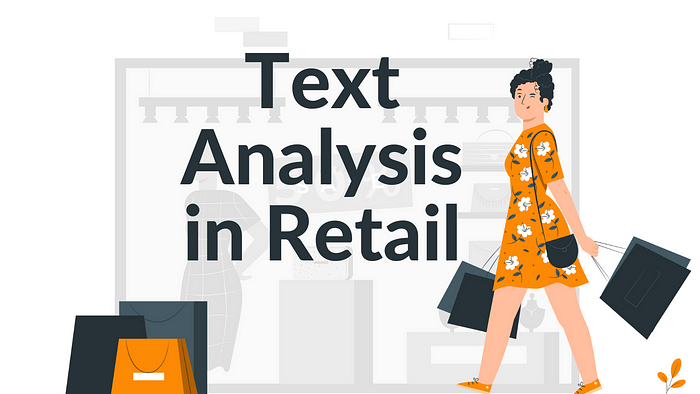Text Analysis in Retail

The retail business operates in an extremely complex marketing and sales landscape, with platforms ranging from traditional stores to e-commerce websites the latter of which is rapidly rising.
Day after day, more consumers turn to eCommerce platforms to acquire their items or, at the very least, to gather other consumers’ thoughts before visiting a store most daily users read reviews before making a purchase decision.
While access to what customers are saying is no longer difficult, finding the time to read, analyze, understand, and categories that data is nearly impossible — especially when firms attempt to do so with information from many data sources. This is where text analytics comes in. As a result, data is being generated at an unprecedented rate, and its significance is expanding.
This type of data can be analyzed manually as long as a process is in place, but it becomes incredibly difficult to conduct when bigger subsets of data are involved, particularly those from different structures and types. Spending the trouble to examine each text in detail and relate it to the context until patterns are discovered becomes costly and prone to inaccuracy.
As a result, Text Analytics has emerged as a tool that can be applied to any customer material, such as product reviews and chats, as well as content that pertains to consumers, be it about them or affects them — such as reviews or blog entries.
From there, a corporation can identify patterns that emphasize behaviors and qualities, as well as forecast trends.
Application of Text Analysis in the Food Industry
- Text analysis can help e-commerce sites to gain extensive insights into their customers’ behavior and intentions, which can then be used to drive sales.
- Tracking the sentiment of any new product launches, from wherever the feedback and opinions may appear.
- The insights gathered from this analysis are used to identify problem areas and suggest improvement actions.
- Target market surveys can benefit any consumer activity, and text analysis allows you to examine open-ended questions.
- Retail owners can swiftly examine thousands of text-heavy surveys and evaluations to improve their services.

Some Common Methods of Analyzing Texts in Retail-
Intent Detection
You can analyze text data to identify the intent of the customers to classify and prioritize customer tickets based on intent. It helps in identifying customers with purchase intent along with new prospective customers.
Sentiment Analysis
Analysis of the feedback, opinions, and suggestions of customers compiled from multiple forums and social media platforms can be easily done with sentiment analysis. You can identify and categorize the sentiments of users and access your market reputation.
Entity Extraction
You can leverage entity extraction to extract named entities from the search queries to understand what your customers are looking for. With it you can offer products and solutions according to their requirements.
Emotion Analysis
You can extract customer support data related to your brand or your competitors and analyze the emotions expressed in the text to identify satisfied customers as well as those that are worth retaining.
Semantic Similarities
With semantic similarities you can unlock market intelligence with text analytics. Compare all competitive products and solutions and check how close they are to each other.

BytesView’s text analytics solution can help you process and analyze text data from multiple sources. Turn reviews, suggestions, social media posts, news, etc., into actionable insights. Listen to your customers, understand their needs as well their dislikes and transform it into sources of focused improvement.


Comments
Post a Comment